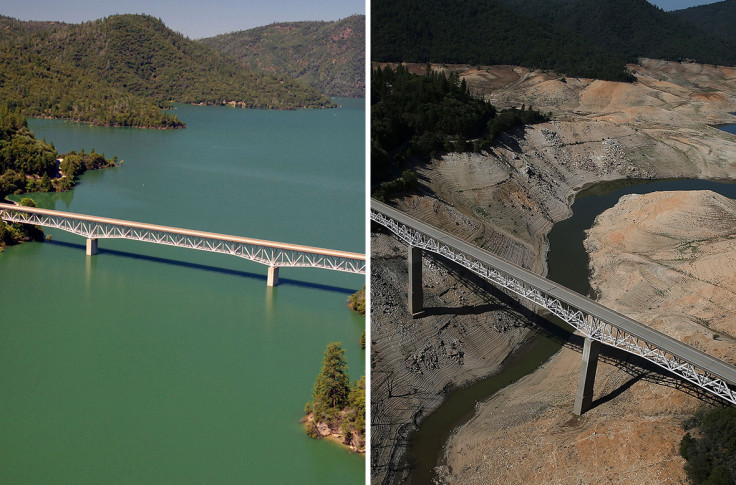California Drought: 'This Is Not a Projection, Global Warming is Playing a Role Right Now'

The ongoing and extreme drought in California is a result of man-made climate change, Stanford scientists have said.
Researchers said it is "very likely" that the drought is human caused after studying the atmospheric conditions associated with the extreme weather event.
"This isn't a projection of 100 years in the future. This is an event that is more extreme than any in the observed record, and our research suggests that global warming is playing a role right now," said climate scientist Noah Diffenbaugh, who led the study.
The team used a combination of computer simulations and statistical techniques to show that the weather events that forced storms away from California are far more likely to form in the presence of modern greenhouse gas concentrations.
California has been gripped by one of the worst droughts in its history for months. Unusually warm temperatures, lack of rainfall and stagnant air conditions have led to an increase in wildfires, air pollution and water shortages.
The ongoing drought conditions eventually led California governor Jerry Brown to declare a drought emergency, while the government said all 58 counties in California have been designated "natural disaster areas".

Published in the Bulletin of the American Meteorological Society, researchers say that the scientific community agrees the immediate cause of the drought is a stubborn "block ridge" over the northeastern Pacific, often known as the Ridiculously Resilient Ridge or Triple R. This stopped winter storms from reaching California in 2013 and 2014 by disrupting typical wind patterns.
The Triple R diverted the flow of high-speed air currents far to the north, meaning Pacific storms bypassed California, Washington and Oregon, stopping the rain and snow that would normally fall on these states.
To work out if this shift was the result of man-made climate change, the team looked at the probability of extreme ridging events over the 20<sup>th century. They found the persistence and intensity of the Triple R was unrivalled by any other event since 1948, when records of this kind began.
Researchers then used climate model simulations using Triple R as a benchmark to compare geopotential heights (an atmospheric property relating to pressure) in two climate model experiments. In one, conditions mirrored our present climate and in the other, greenhouse gas emissions were kept to those that existed just before the Industrial Revolution.
Findings showed conditions associated with Triple R events were three times more likely to occur in our present climate in comparison with the preindustrial one.
Bala Rajaratnam, a study collaborator, said: "We've demonstrated with high statistical confidence that the large-scale atmospheric conditions, similar to those associated with the Triple R, are far more likely to occur now than in the climate before we emitted large amounts of greenhouse gases."
© Copyright IBTimes 2025. All rights reserved.






















